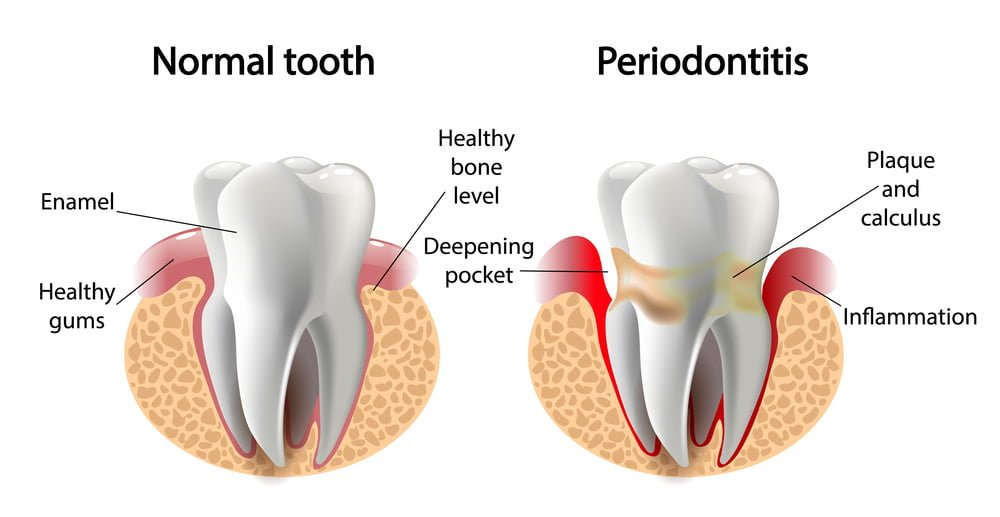The bottom part of our teeth is surrounded by soft tissues, namely the gum. Making sure that you look after your gums is equally important as looking after your teeth.
When the gums become infected, it is known as gum disease. This is a result of plaque which is a sticky film that has accumulated on the teeth and gums. The build-up of plaque can cause the gums to become red, puffy and can cause them to bleed.
If the gum disease is left untreated then this can result in the gums coming away from the teeth resulting in pockets forming between the gums and teeth. This can then allow germs to be embedded in the pockets leading the bone around the teeth to weaken. If the Periodontal disease is left untreated, the outcome is the inevitable loss of teeth.
Receding gums is also a common condition that often results from untreated periodontal disease. Other causes of gum recession include harsh tooth brushing, medication side effects, and genetic predisposition to gum recession, and some dental procedures.
If gum disease is diagnosed early, then it can be treated before it is too late. A high number of people are totally unaware that they are suffering from gum disease. It is for this reason that it is absolutely essential to visit your dentist regularly in order to have a check-up.
In the meantime, one should take note of the following ‘red flags’ indicating you may already have gum disease:
- Red and puffy gums
- Bleeding gums during brushing or flossing
- Toothache or sensitivity
- Recurring bad breath
- Loose teeth
- Gaps between teeth
How is gum disease treated?
The first step that you can take to help treat the gum disease is to practice good oral hygiene:
- Cleaning your teeth with a suitable tooth brush for 2 minutes each morning and before you go to sleep for the night
- We recommend using a toothpaste that contains fluoride as this can help prevent tooth decay
- Interdental cleaning with floss or interdental brushes each time you brush
- Not smoking
- Having regular dental check-ups as recommended by your dentist.
The dentist or dental hygienist removes the plaque through a deep-cleaning method called scaling and root planing. Scaling means scraping off the tartar from above and below the gum line. Root planing gets rid of rough spots on the tooth root where the germs gather and help remove bacteria that contribute to the disease.
Gum disease process is multifactorial and one type of treatment is not suitable for all. We can assess you and formulate a personalised treatment plan that would work the best for you. However, sometimes a referral to a specialist may be required for persistent Periodontal disease.

